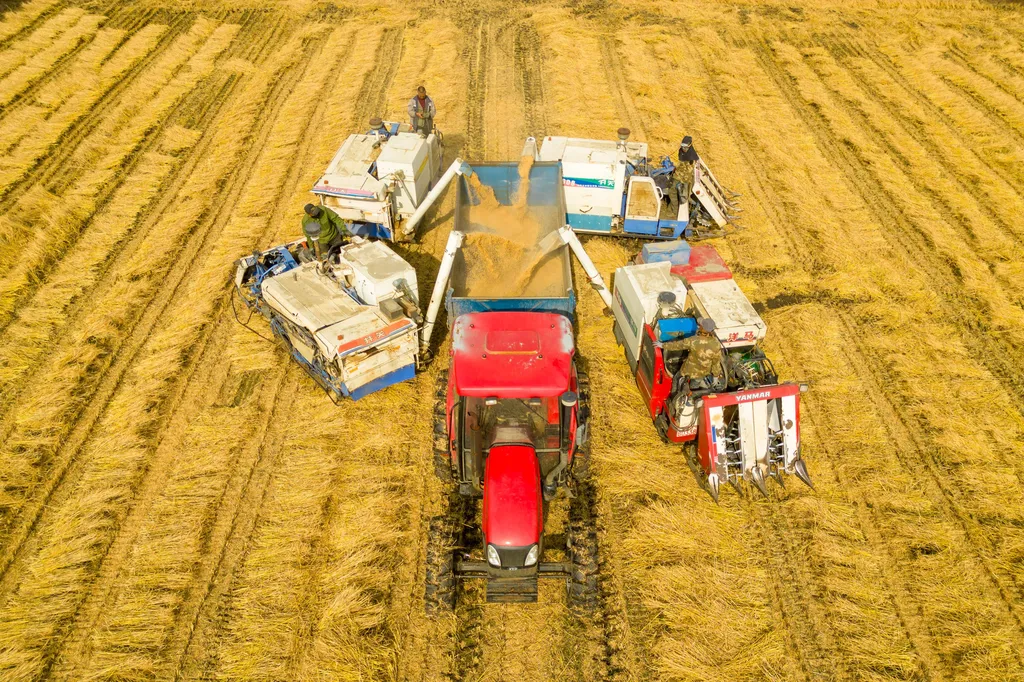In the heart of China’s agricultural landscape, a silent revolution is taking place, one that is as much about data as it is about dirt. A recent study, led by Yanwei Li from the Human Resources and Social Security Bureau of Gangcheng District in Jinan, Shandong, has shed light on the intricate dance between the digital economy and cultivated land use efficiency (CLUE). The research, published in *Frontiers in Sustainable Food Systems* (which translates to *Frontiers in Sustainable Food Systems* in English), offers a compelling narrative of how technology and agriculture are intertwining to shape the future of food security.
The study, which spans a significant period, reveals that both CLUE and the digital economy have been on an upward trajectory. However, the development level of CLUE has consistently outpaced that of the digital economy, with notable spatial differences across regions. “The coupled and coordinated interaction between these two domains is crucial for guaranteeing national food security,” Li explains, underscoring the practical significance of the study.
The research employs the coupling coordination degree (CCD) model to measure the level of coordination and interaction between the digital economy and CLUE. The findings are promising: the CCD has steadily risen over the study period, with regional differences narrowing and the overall level evolving from a state of mild disorder to benign coordination. High-value areas are predominantly clustered in the eastern region and parts of the central region, indicating a geographical pattern that could inform future policy and investment decisions.
One of the most intriguing findings is the stability of the CCD in maintaining its original level state, with dynamic evolution occurring gradually. The study also highlights a positive synergy effect when the level of neighboring regions aligns with its own level, suggesting that regional collaboration could be a key driver of progress.
The Tobit model, introduced to explore the driving factors behind these trends, reveals that economic growth, technical innovation, and urbanization all promote the CCD. Conversely, the urban–rural development gap and industrial structure inhibit the CCD. These insights could have significant implications for policymakers and investors in the energy sector, particularly those focused on sustainable agriculture and rural development.
The study’s findings suggest that the future of agriculture lies in the strategic integration of digital technologies. As Li notes, “The digital economy is not just a tool but a catalyst for transforming cultivated land use efficiency.” This transformation could open up new avenues for commercial impact, from precision farming to data-driven supply chain management.
The research also underscores the importance of regional collaboration and targeted policy interventions. By understanding the spatial differences and driving factors, stakeholders can make more informed decisions that promote sustainable agricultural practices and food security.
In the broader context, this study is a testament to the power of interdisciplinary research. By bridging the gap between digital technology and agriculture, it offers a roadmap for future developments in the field. As the world grapples with the challenges of climate change and food security, such insights are more valuable than ever.
For the energy sector, the implications are clear. The integration of digital technologies into agriculture presents new opportunities for innovation and investment. From renewable energy solutions for smart farms to data analytics for optimizing land use, the potential is vast. The study by Li and his team serves as a compelling call to action, urging stakeholders to embrace the digital revolution and harness its potential for a sustainable future.
As we stand on the cusp of a new era in agriculture, one thing is clear: the future is not just about growing crops; it’s about growing smarter. And in this quest for smarter agriculture, the digital economy is set to play a pivotal role.

